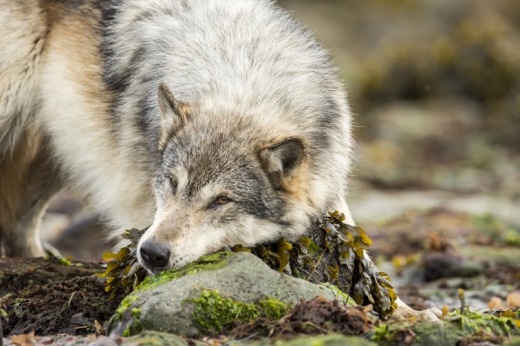On a December day in 2012, a collared female wolf known by wildlife biologists as 832F wandered beyond the boundaries of Yellowstone National Park into Wyoming where she was shot and killed. She would be among the first wolves shot in Wyoming since the U.S. Fish & Wildlife Service removed federal protections from the species and turned over their management to the state earlier that fall.
At the time, 832F was called the “most famous wolf in the world,” the alpha female of the Lamar Canyon pack, wildly popular among tourists to Yellowstone National Park. She was known for her agile hunting ability, able to take down an elk singlehandedly, a dangerous feat usually undertaken by a whole pack. Unusually large with a thick gray and white coat, 832F was a queen among wolves, leader of her pack, beautiful, lethal, a living expression of what it means to be wild.
The move by the Fish and Wildlife Service to take away federal protections for wolves was controversial, but the shooting of this particular wolf unleashed a firestorm of criticism of the Service and shined a harsh light on the state of Wyoming’s wolf management program, which included a hostile shoot-on-sight policy across the vast majority of the state and one wolf-killing loophole after another in the remainder.
Earthjustice took the Fish and Wildlife Service to court over the decision to hand over wolf management to a state with a history of extreme anti-wolf policies and a management program that failed to include essential protections for wolves. Last year, a judge ruled in our favor and restored protections to wolves throughout Wyoming.
But just this past week, the fate of wolves in Wyoming and in three other states in the Western Great Lakes region again hung in the balance. Earlier this year, a cadre of anti-wildlife members of Congress slipped a policy rider into House and Senate versions of government spending bills that would have overridden two federal court decisions (including our 2014 victory for wolves in Wyoming). This rider would have stripped wolves of federal protections and would have prevented any further judicial review of the legality of that decision.
If enacted, that rider would have given Wyoming the green light to resume its hostile management program, including shoot-on-sight management of wolves, with no limit or regulation whatsoever, across 85 percent of that state. Just as a fragile recovery is within reach for wolves in the northern Rockies, Wyoming would have again subjected them to the same unregulated killing that nearly wiped them out in the first place.
In the end, wolves survived the night. Last week, President Obama signed into law an omnibus spending package that did not include the wolf delisting rider. That rider, along with 12 other anti-Endangered Species Act riders and dozens of other anti-environmental riders, were excluded from the final omnibus deal. The fact that wolves and the Endangered Species Act emerged from the omnibus deliberations and deal-making relatively unscathed is in no small part due to the thousands of Americans who wrote in to their members of Congress, or called the White House, or took to social media to demand that their leaders follow through on the American promise to safeguard the natural world for the sake of our children and grandchildren. The message of these constituents was heard loud and clear by 25 senators and 92 members of the House who wrote letters to the president urging him to reject any policy riders that undermine the Endangered Species Act, an Act that serves as a critical safety net for the nation’s imperiled plants and animals.
Today, we celebrate that wolves in Wyoming remain protected. We thank the members of the House and Senate who stood strong for the protection of wolves and recognized that a spending bill is no place to make life-and-death policy decisions for our nation’s wildlife. We will remain steadfast in our commitment to fight for the wolves and other species under threat of extinction. And we will think of the wolf somewhere in the mountains south of Wyoming’s Teton Range that will not be shot this winter, but instead will climb through the snow to a ridge-top at night under a winter sky filled with stars and will throw back her head to send a wild howl across the forest.
Preso is an Earthjustice attorney based in Bozeman, Montana.

Image: Ian McAllister
source

No comments:
Post a Comment